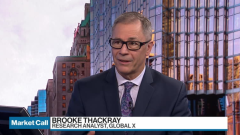Apr 3, 2023
Rogers CEO turns to cost cuts and customers with megadeal finally done
, Bloomberg News
Market looking at the deal as a big positive for Rogers
Rogers Communications Inc. has finally gained control of Shaw Communications Inc., emerging from two years of legal battles, family intrigue and government lobbying to complete one of Canada’s biggest-ever corporate takeovers. Chief Executive Officer Tony Staffieri doesn’t want to look back.
The tortuous path to getting the deal done was “longer than we would have expected,” Staffieri said in an interview. Now it’s time to move on — starting this week, when he’ll meet with Shaw staff in Calgary and Vancouver and begin combining the cable and internet providers with a goal of wringing out at least $1 billion (US$745 million) in costs.
“The sheer size always introduces complexity,” he said. “So it’s going to be about, how do we keep this simple and focused on the things that are going to matter most?”
His list of priorities includes integrating the two companies’ networks, spending billions to expand wireless coverage and 5G services and making it easy for customers of Shaw to do business with Rogers.
Rogers unveiled its $20 billion friendly offer for Shaw in March 2021, uniting two billionaire families to create an enterprise that will be nearly as large as rival BCE Inc. The companies told investors they expected to close the deal by mid-2022, but it was delayed when Canada’s antitrust czar, Matthew Boswell, decided to wage a legal battle against it. He lost, and on Friday, the Canadian government gave approval, with conditions around jobs in Western Canada, network investment and consumer pricing.
In the middle of that two-year period, Staffieri was fired as chief financial officer.
He had been caught in a power struggle involving members of the Rogers family and Joe Natale, the CEO who put together the Shaw deal. The family feud wound up in court, where Edward Rogers, the son of the company’s late founder, gained control of the board, which then turfed Natale and brought Staffieri back in November 2021, this time as CEO.
He’d been unemployed for less than two months. His first priority was clear: get the Shaw deal done.
Staffieri took some criticism for his handling of the merger. In early 2022, the Canadian government made it clear that it wouldn’t allow Rogers to buy Shaw’s Freedom Mobile business because it would eliminate the No. 4 wireless provider in key markets, including Toronto and Vancouver. Divesting that business was the only option. But Rogers negotiated first with private equity players instead of Montreal-based Quebecor Inc., the largest and strongest of Canada’s regional wireless and cable companies.
From the government’s point of view, Quebecor was the best solution to the antitrust problem. Rogers and Shaw ultimately agreed to sell it to the Montreal-based company for $2.85 billion in a deal that also closed Monday.
Staffieri said he has “no regrets at all” about how the company and its advisers managed the process.
“As it became clear that the government wanted to maintain a fourth wireless competitor, we quickly looked to buyers of Freedom and presented credible options,” he said.
Rogers isn’t looking at other asset sales, Staffieri said, because it’s confident it can meet its pledge to quickly cut its leverage ratio to less than five times without them. In a year’s time, “you’ll see a company that is leading in market share and translating that to strong cash flow growth, with a healthy piece of de-levering the balance sheet.”



